How to Get Bubbles in Pizza Crust & How to Prevent
A pizza crust without bubbles is like a cake without frosting to those who love cheesy pizza.
The airy texture of a good pizza is one of the most important parts. You want to make sure that your pizza crust is bubbly and delicious, but you don’t know-how.
There are many ways to get bubbles in your pizza crust, but getting that airy crunch can be hard. You don’t need to worry anymore, we have figured out how to get bubbles in pizza crust.
We will discuss the most effective tips for getting bubbles and why bubbles might not be present at your pizza crust.
A Few Tips on How to Get Bubbles in Pizza Crust
Making your pizza crust delicious and bubbly isn’t hard, but it can be tricky to do. Try the following tips for getting bubbles in your pizza dough if you want more air pockets and cheese flavor:
TIP #01: Add Some Sugar to the Dough
Add granulated sugar to your dough before kneading it. The sugar will help the yeast in the dough to ferment faster, which will give you more bubbles during baking.
Moreover, it traps carbon dioxide and moisture in the dough, which causes bubbles to form as the dough bakes.
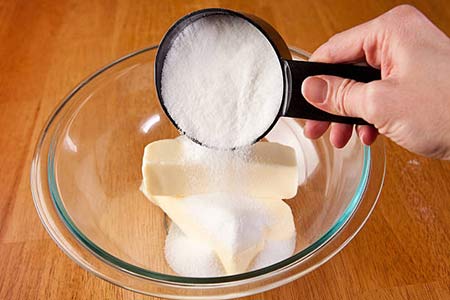
TIP #02: Instead Of Water, Use Crushed Ice
Crushed ice will give you bubbles because as it melts, it becomes steam. The steam will be captured by the dough and create bubbles during baking.
Ice also has less latent heat than boiling water, so it will cool the dough down less.
TIP #03: Add Baking Soda to Ice before Working
You can add baking soda to crushed ice, and then work that mixture into your dough. You might need to add some more water before kneading it because you want a good balance of dry and wet ingredients.
If you don’t add water after adding ice and baking soda together, you will get hard lumps of dough rather than the dough that are soft and bubbly.
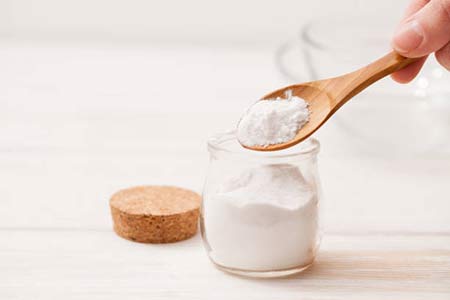
TIP #04: Let It Rise for Longer
When you let your dough rise for longer periods of time, bubbles are more likely to occur. It will be similar to letting bread rise before baking it.
If you want bubbles, let the dough sit at room temperature for around two hours depending on your preference. If you prefer, you can let the dough sit for longer periods of time. The longer the dough sits, the greater the chance it’ll bubble up.
TIP #05: Use Bread Flour Rather Than Regular Flour
Regular all-purpose flour has less gluten than bread flour, which makes it harder for air bubbles to form in your dough.
Bread flour will give you more bubbles because of the greater amount of protein in the flour.
TIP #06: Add Yeast to the Flour Before
This tip will ensure that your yeast gets activated as soon as possible so bubbles can form before you bake.
The more quickly the yeast starts working, the greater the number of air bubbles that can be formed.
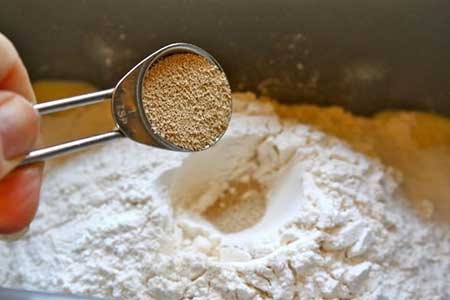
Also Read: How to season your pizza screen easily.
TIP #07: Add A Bit More Fermentation
Adding more fermentation to your dough will help give you bubbles in the crust. Fermentation is when yeast converts sugars into carbon dioxide and alcohol.
This also gives your pizza a slightly sour flavor that most people love.
TIP #08: Get the Dough Really Warm
Before baking your dough, get it really warm. This will give you more air pockets because the yeast will work faster and create a greater amount of carbon dioxide.
Most people do this by briefly microwaving their dough before they put it in the oven.
TIP #09: Use Your Hands Instead Of Rolling a Pin
A rolling pin is used to remove all the air bubbles in the dough that would affect the bubbles. If you want bubbles, roll or stretch out your dough using your hands.
This will add air bubbles into the dough because of how light and gentle the process is.
TIP #10: Make the Airy Crusts Ahead Of Time
If you want bubbles for the airy crust, make them ahead of time and freeze them so they can sit and ferment. This will help you make good bubbles for a good amount of time.
TIP #11: Brush Olive Oil on the Pizza Crust and Baking Sheet
Brushing the pizza crust with olive oil will give you bubbles. This is because the fat in the oil coats the dough so that it doesn’t stick to your pan or baking sheet.
The more easily you can move the dough, the better it will be for getting air pockets before you bake it.
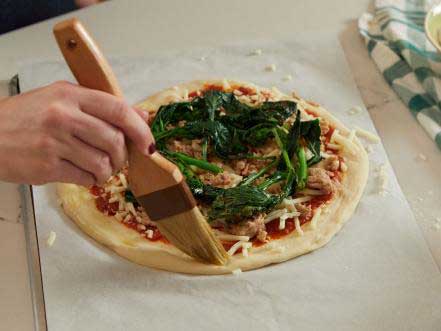
TIP #12: Bake the Pizza at a High Temperature
Baking at a high temperature will give you bubbles because it speeds up the fermentation process. A temperature of 250 to 260 degrees C (450 to 500 degrees F) is ideal for baking pizza.
It will change your dough from being raw to bake in about five minutes, which means that all of your bubbles have time to form before baking.
This tip makes sure that your dough doesn’t get too close to the oven’s heat or burn before all the bubbles form.
Moreover, pizza with bubbles is often described as cheesy and delicious by most people who eat them. If you want to make sure that your pizza has lots of bubbles, follow these tips.
What Causes Pizza Crust Not To Bubble?
The two main reasons why pizza dough will not have bubbles are if the yeast is bad or if the dough isn’t being fermented properly.
If you think your yeast might be bad, you need to get new yeast, so the dough has time to rise properly before baking it.
Another reason is that you don’t have enough time for fermentation, which means you need to get the dough warm, so it has enough time for the yeast to activate.
How to Prevent Pizza Crust Bubble
Bubbles result from natural and necessary processes involved in making crusts — fermentation and temperature. When sugar and yeast ferment, carbon dioxide and moisture are trapped in the dough, which expands when heated, causing bubbles of varied sizes.
Smaller bubbles are normally unnoticeable, but larger bubbles might cause toppings to slide and diners to be underwhelmed. Luckily there are a few tricks to avoid these annoying bubbles.
1. Under-Proofed Dough
Due to under-proofed dough, bubbles can appear. In this instance, you’ll frequently encounter little, thin bubbles that rupture and burn. If this is your primary concern, simply ferment the dough for longer. It is also possible to acquire bubbles from over-proofed dough, but this is less common.
2. Using A Dough Docker
Pizza dough bubbles can be remedied by removing air bubbles with a Pizzacraft Dough Docker before adding toppings to your pizza.
The dough docker is a quick and simple tool to ensure that the dough has been fully kneaded and that all air bubbles have been removed. Because the dough will be better prepared for the oven using the dough docker, you may worry less about fermentation time.
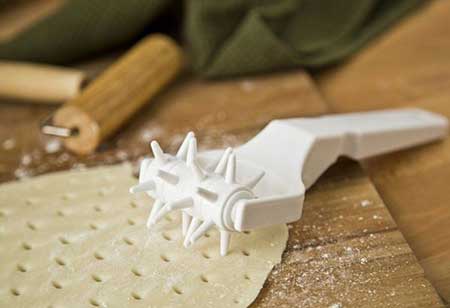
3. Keep Your Temper In Check
When you rush the dough balls from the cooler to the oven, bubbles form. Instead, let dough balls sit at room temperature for a few minutes before forming them into a crust.
Allowing the dough balls to warm to five degrees above the colder temperature has been shown to prevent bubbles in some operations; nonetheless, a two-hour temper at room temperature is suggested before opening into skins.
Conclusion
Many people want bubbles in their pizza crust. You can get bubbles in your dough in a variety of ways, but you can also mess it up. We’ve provided tips on how to get bubbles in pizza crust, so follow those tips, and you will have a bubbly, cheesy pizza in no time. Hap







